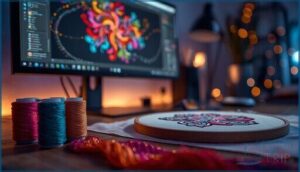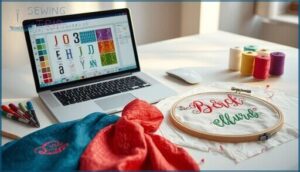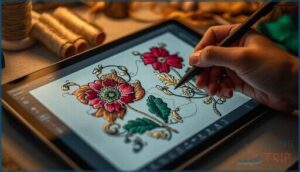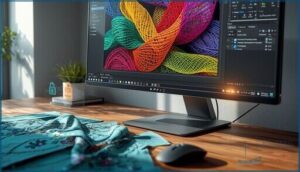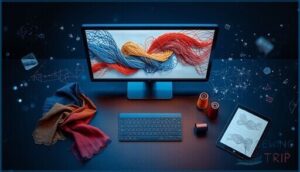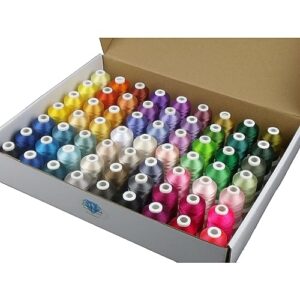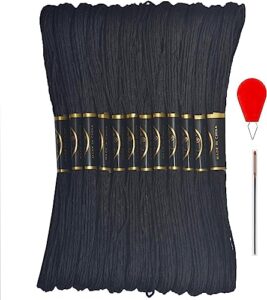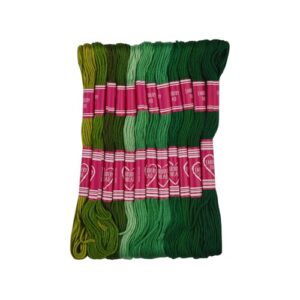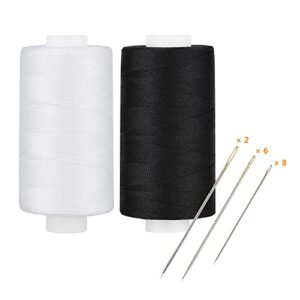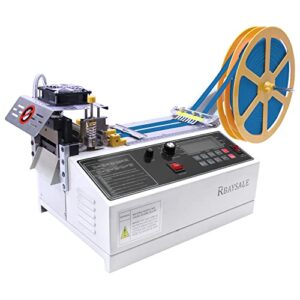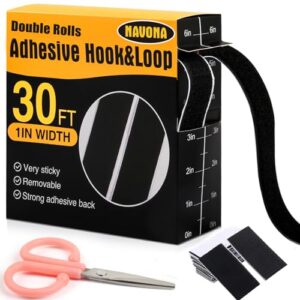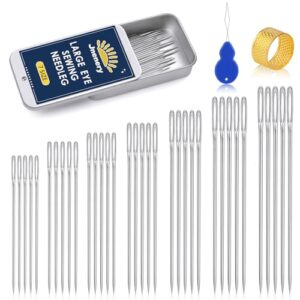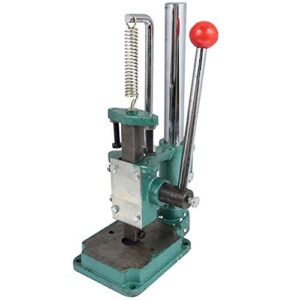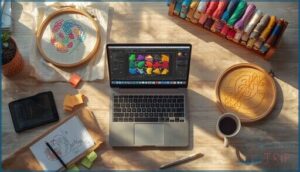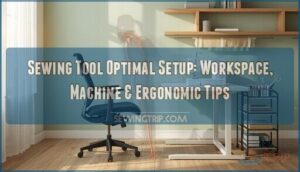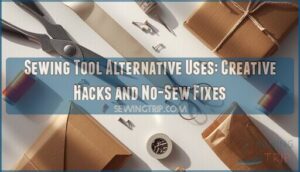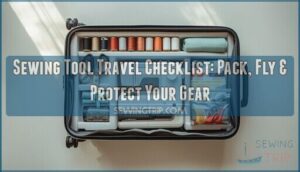This site is supported by our readers. We may earn a commission, at no cost to you, if you purchase through links.
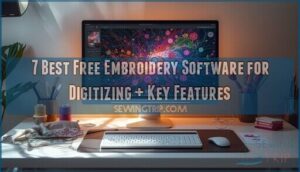
You can spend thousands on embroidery digitizing software, or you can start creating professional designs today without paying a cent. The catch? Free embroidery software often comes with trade-offs—limited features, steeper learning curves, or compatibility quirks that can frustrate beginners.
But here’s what most people don’t realize: several free programs offer surprisingly powerful digitizing capabilities that rival entry-level paid options. Whether you’re testing the waters before investing in premium tools or building a hobby on a budget, knowing which free software delivers real value versus which ones waste your time makes all the difference.
The best free embroidery software digitizing options provide genuine paths to creating custom designs, each with distinct strengths worth understanding before you download.
Table Of Contents
- Key Takeaways
- Best Free Embroidery Digitizing Software Compared
- Key Features to Look for in Free Software
- Free Trials Vs. Permanent Free Software
- Top 10 Essential Embroidery Accessories
- 1. Simthread Embroidery Machine Thread Colors Kit
- 2. Black Embroidery Floss Cross Stitch Threads
- 3. Coats and Clark Natural Cotton Thread
- 4. Friendship Bracelet String Green Embroidery Floss
- 5. Simthread Black and White Thread Set
- 6. Webbing Cutting Machine Hot and Cold
- 7. Navona Heavy Duty Hook and Loop
- 8. Large Eye Sewing Needles Set
- 9. Hand Press Punching Machine Cast Iron
- 10. Brother SE2000 Embroidery and Sewing Machine
- Tips for Beginners Using Free Digitizing Software
- Frequently Asked Questions (FAQs)
- Conclusion
Key Takeaways
- Free embroidery digitizing software like Ink/Stitch and Embrilliance Express offer genuine professional-grade capabilities without cost, though you’ll face trade-offs like steeper learning curves or limited features compared to paid options.
- Understanding the difference between permanent free programs and time-limited trials matters—trials give you full access to premium features for 14-30 days, while always-free options provide basic tools indefinitely with no expiration.
- File format compatibility is your first critical hurdle since DST and PES formats work with over 85% of embroidery machines, making these formats essential for ensuring your designs actually stitch out correctly.
- Most beginners reach digitizing proficiency within 1-3 months of regular practice, and pairing your software choice with proper accessories like quality thread, appropriate needles, and compatible machines directly impacts your finished results.
Best Free Embroidery Digitizing Software Compared
You’ve got plenty of choices when it comes to free embroidery digitizing software, but they don’t all offer the same capabilities. Some are best for beginners who want basic editing, while others let you create complex designs from scratch.
Here’s a breakdown of the seven top free options you can start using today, with details on what each one brings to the table.
Ink/Stitch Overview and Features
If you’re looking for free embroidery software that doesn’t compromise on power, InkStitch stands out as an opensource digitizing platform. It integrates with Inkscape to handle vector conversion from SVG files, exports to formats like PES and DST, and includes stitch simulation for previewing your work.
You’ll also get jump stitch control, a font library, and strong community support to help you master this capable tool. Cost-effectiveness is a major benefit of using free digitizing software.
Embrilliance Express Capabilities
Embrilliance Express gives you powerful BX Font Editing without spending a dime, making it ideal for adding lettering to embroidery designs. The software’s modular architecture lets you start free and upgrade later, while its easy-to-use user interface works smoothly on both Windows and Mac. Embroidery digitizing converts artwork to stitch files.
- File format support covers most major embroidery machines
- Community resources include active forums and detailed tutorials
- Editing software manages monogramming with professional results
- Free embroidery software platform requires paid modules for full digitizing
My Editor Functionality
My Editor stands out as free embroidery software that offers file compatibility with formats like ART, DST, and PES, giving you solid editing software for resizing and color changes. While digitizing features hit editing limitations, the user interface makes stitch preview simple for checking your work before sending to machines.
This free workflow tool covers essential software features when you’re converting and preparing designs for production.
SophieSew Manual Digitizing Tools
SophieSew gives you manual digitizing that lets you draw stitch paths by hand, offering creative flexibility that automated tools can’t match. However, you’ll encounter stability issues on newer systems since development stopped years ago.
Despite these digitizing limitations, the user interface remains straightforward for simple projects, and tutorial availability through legacy videos helps you navigate its quirks as free embroidery software.
Bernina Artlink 8 Free Features
Bernina Artlink 8 targets Bernina and Brother machine owners who need fast, straightforward file prep without extra complexity. This free embroidery software supports basic resizing and file conversion but doesn’t include digitizing tools, keeping the uncluttered interface focused on quick edits.
- Machine compatibility optimized for PES format workflows
- Basic resizing and rotation for embroidery designs
- Stable software features for rapid file preparation
Digitizing beyond the basics requires paid upgrades.
Premier+ 2 Embroidery Software Free Options
Leading+ 2 Embroidery Software offers limited free features within a much larger paid suite, making it more of a trial experience than a standalone free embroidery software solution. You’ll find basic viewing and minimal editing, but true digitizing and sophisticated tools require purchasing modules—a common path for those exploring software options before committing to upgrades.
| Feature Category | Free Version Limits | Paid Module Access |
|---|---|---|
| File Compatibility | View-only for most formats | Full editing across 20+ formats |
| Digitizing Tools | None available | Auto and manual digitizing |
| Learning Resources | Basic tutorials included | Extensive training library |
| User Community | Access to forums | Priority support channels |
| Module Upgrade Paths | Preview functionality only | Incremental feature unlocks |
MySewnet Free Embroidery Software
mySewnet stands out as free embroidery software that blends cloud integration with a design marketplace, letting you access projects from anywhere. The free tier gives you basic editing and viewing, but higher subscription tiers release full digitizing software capabilities. You’ll appreciate the mobile app for on-the-go project management, though serious embroidery software features require monthly payments.
- Cloud storage syncs designs across all your devices automatically
- Design marketplace provides thousands of ready-to-stitch patterns
- Mobile app lets you preview and organize projects away from your machine
- Subscription tiers scale from basic viewing to professional embroidery digitizing software tools
Key Features to Look for in Free Software
Not all free embroidery software is created equal, and knowing what to look for can save you hours of frustration down the road. The right features will help you create professional-looking designs without hitting constant roadblocks or compatibility issues.
Here are six essential capabilities your free software should offer to make your digitizing journey smoother and more successful.
File Format Support and Conversion
Format compatibility is your first hurdle—machines won’t stitch what they can’t read. DST and PES formats work on over 85% of machines, giving you file security no matter which brand you own.
Free tools like Ink/Stitch and My Editor handle file conversion across at least five major embroidery file formats, while Embird accommodates over 70, making batch conversion and SVG integration straightforward.
| Software | Supported File Formats |
|---|---|
| Ink/Stitch | PES, DST, EXP, SVG export |
| My Editor | PES, DST, ART, HUS, 3D preview |
| StitchBuddy | SVG to embroidery, multi-format export |
| Embird | 70+ formats, conversion in trial mode |
Editing and Design Customization Tools
You need real control—design resizing, color palettes, and stitch types make the difference between generic and personal.
Ink/Stitch converts vector images to embroidery with customizable satin and running stitches, while SophieSew offers object manipulation through rotating and duplicating elements.
My Editor includes color editing and design merging, though most free embroidery software options lack sophisticated pull compensation for professional-level embroidery design editing.
Font and Lettering Capabilities
Letters anchor your designs—whether you’re personalizing a tote or branding a uniform. Free software bundles 10–124 digitized fonts, but feature-rich font programs like Hatch support TrueType and OpenType font importation for unlimited computer fonts.
- Letter shaping in basic tools is rudimentary, while premium embroidery font software allows typography conversion from vectors
- BX fonts work seamlessly in Embrilliance Express for instant lettering
- Stitch optimization in Hatch adjusts density along curves automatically
- Font libraries may require external sources in budget tools
Stitch Density and Quality Control
Getting those fonts digitized is just half the battle—stitch density separates clean embroidery from a puckered mess. Most free digitizing tools default to 0.4–0.8 mm stitch spacing, adjustable to match fabric weight and design quality demands.
You can toggle underlay stitches to stabilize complex fills, reducing top thread density by up to 30%. However, pull compensation isn’t available in most free programs, limiting professional-level design quality optimization.
| Stitch Spacing | Underlay Stitches | Thread Tension |
|---|---|---|
| 0.4–0.8 mm default | Toggle on/off | Manual adjustment |
| Adjustable density | 30% reduction option | Fabric-specific |
| Precision controls | Stability boost | Quality impact |
Machine Compatibility and Export Options
Your beautiful digitized design means nothing if it won’t talk to your embroidery machine. Over 90% of free digitizing software accepts direct export to major machine brands—Brother, Janome, Singer, Bernina—across up to 15 file formats.
Machine-specific features like hoop size presets and thread color catalogs cut setup time by 40%, while mobile embroidery viewers let you preview designs on your phone before committing to the stitch-out.
- DST and PES formats work with 85%+ of consumer and commercial machines
- One-click export functions ease workflow for brand-specific file types
- Mobile viewers enable quick design checks without desktop access
User Interface and Ease of Use
Even a powerful free embroidery software won’t help you if its user interface feels like decoding hieroglyphics. Beginner-friendly options with straightforward design keep the learning curve manageable, while cluttered menus and unclear software navigation can stall your creative momentum.
Look for free software options that balance accessibility features with functionality—clean layouts, clear tool labels, and responsive controls make all the difference in your user experience.
Free Trials Vs. Permanent Free Software
Not all free embroidery software works the same way. Some programs stay free forever with basic features, while others give you full access for a limited time before requiring payment.
Understanding the difference between trial versions and permanently free options helps you choose the right path for your digitizing journey.
SewWhat-Pro 30-Day Free Trial Details
SewWhat-Pro offers a 30-day free trial of its professional editing software, providing an opportunity to explore its features without any cost. During this trial, nearly all features are unlocked, but there are saving restrictions: users can save up to 60 designs, and complex files with more than three color stops won’t export properly. Once the trial ends, feature access for saves and conversions is restricted, although users can still open and edit files.
| Trial Aspect | What You Get | Limitations |
|---|---|---|
| Duration | 30 days from first use | can’t extend by reinstalling |
| Editing Tools | Full access to resize, merge, rotate | Saving counts toward 60-file quota |
| File Exports | All formats available | Max 3 color stops per saved design |
| Post-Trial | Can view and edit designs | No saves without purchasing license |
Download insights indicate that this trial is particularly attractive to beginners seeking hands-on experience before committing to paid embroidery software.
SewArt Trial Capabilities and Limitations
SewArt’s trial lets you explore embroidery digitizing for 30 days with full access to automated and manual tools, though you’ll hit some walls when saving. Your designs can’t exceed three thread colors or 30 objects, and files get stamped with a watermark identifying them as trial versions. Anything beyond 600 stitches won’t export at all.
Most machines accept these trial files, but the watermark and complexity caps make them better for practice runs than finished projects. Once your 30 days wrap up, you’ll need to purchase a license since the software blocks further digitizing.
| Trial Feature | What’s Available | Restrictions |
|---|---|---|
| Trial Color Limits | Full editing tools | Max 3 colors per exported file |
| Object Export Cap | Lines, curves, text | 30 objects maximum per design |
| Watermark Impact | All formats (PES, JEF) | “Trial Version” stamp on exports |
| Machine Compatibility | Brother, Janome, Bernina | 600-stitch limit blocks larger files |
| Support Restrictions | Video tutorials included | No official tech support for trials |
Hatch Embroidery Software Trial Overview
Hatch Embroidery grants you complete access to all four software levels—Organizer, Personalizer, Composer, and Digitizer—during its 30-day trial, no credit card needed. You’ll gain auto-digitizing tools, 200+ lessons, and support for 22 file formats including.dst and.pes. Windows 10 or 11 with 16 GB RAM keeps things running smoothly, though virtual machines won’t activate your trial.
| Trial Component | What You Get | Technical Notes |
|---|---|---|
| Feature accessibility | Full digitizing, editing, unlimited saves | All levels unlocked for 30 days |
| Training resources | 200+ lessons, 400 free designs | Hatch Academy included |
| System requirements | Windows 10/11, 16 GB RAM | Mac via Parallels only |
| Trial limitations | No functional restrictions during trial | Expires after 30 days |
| Post-trial options | Lifetime license or FlexPay available | Read-only mode without purchase |
Benefits and Drawbacks of Free Trials
When you’re weighing embroidery software free trials against permanent solutions, the trade-offs shape your creative journey. Free trials give you full software access to premium digitizing features for 14 to 30 days, with over 200 lessons accelerating skill development. However, you’ll face cost commitment decisions quickly, and feature limitations kick in once trials expire.
| Benefits | Drawbacks |
|---|---|
| Full feature access and auto-digitizing without upfront payment | Software access ends completely after trial period |
| 200+ tutorials boost skill development during evaluation window | Designs may be watermarked or locked post-trial |
| Export to all major formats helps test machine compatibility | Limited user experience support compared to paid users |
| No credit card required for 90% of leading trials | Only 10-15% convert due to complexity or cost commitment concerns |
Free trials offer a unique opportunity to explore premium features without immediate financial commitment. With access to 200+ tutorials, users can significantly enhance their skills within the trial period. However, the trial’s expiration brings limitations, such as watermarked designs and reduced support, which can impact the overall experience.
Choosing Between Trial and Always-Free Programs
Your workflow direction hinges on a practical cost-benefit analysis. Always-free embroidery software suits hobbyists seeking zero-cost accessibility, while free trials reveal premium feature accessibility before you commit. Consider project complexity and long-term needs when evaluating software options.
| Decision Factor | Always-Free Programs | Free Trial Software |
|---|---|---|
| Feature Accessibility | Manual editing, limited formats | Full auto-digitizing, all formats |
| Best For | Basic logos, learning curve exploration | Complex multi-layer projects |
| Long-Term Value | Continuous free access, community support | 15-25% convert to paid tiers |
Top 10 Essential Embroidery Accessories
Even the best embroidery software won’t get you far without the right accessories to support your projects. From high-quality threads that bring your designs to life to specialized tools that make production smoother, these items bridge the gap between digital files and finished embroidery.
Here are ten essential accessories that’ll complement your digitizing software and help you create professional results.
1. Simthread Embroidery Machine Thread Colors Kit
You can’t digitize a stunning design and watch it fall apart because of thread quality. That’s where the Simthread Embroidery Machine Thread Colors Kit becomes essential.
This 63-color polyester thread collection gives you 550 yards per spool, all compatible with popular embroidery machines like Brother, Janome, and Bernina. Thread color variety covers everything from basics to bold hues, while the 40-weight standard ensures consistent stitch quality.
With consumer brand ratings highlighting minimal breakage and impressive color fastness, it’s reliable enough for both beginners experimenting with free digitizing software and seasoned pros.
Best For: Embroidery enthusiasts and professionals who need a reliable, affordable thread collection with wide color variety for diverse projects on standard home or commercial machines.
- 63 vibrant colors with 550 yards per spool give you plenty of thread and options for multi-color designs without constantly reordering.
- Strong polyester construction with proven color fastness means your embroidery won’t fade or break mid-project, even after washing.
- Works seamlessly with major machine brands like Brother, Janome, and Singer, so you don’t need to worry about compatibility issues.
- Spools are smaller than some users expect, which might disappoint if you’re comparing them to premium brands like Madeira.
- Every other spool is packaged upside down, making it annoying to read color numbers when you’re organizing or selecting threads.
- Polyester doesn’t have the same high shine as rayon thread, so it’s not ideal if you specifically want that glossy finish.
2. Black Embroidery Floss Cross Stitch Threads
When your digitizing software generates intricate embroidery designs, you need black embroidery floss that won’t let you down. DMC and Anchor lead brand comparison with mercerized cotton that delivers excellent stitch coverage on 14 to 18 count Aida.
Cost analysis shows DMC at $0.60 per skein or bulk cones at 2.8 cents per yard. The floss material’s six-strand structure lets you adjust thickness, though black’s intense dye saturation means you’ll often need two or three strands for ideal project outcomes, especially on lighter fabrics.
Best For: Crafters working on cross stitch, friendship bracelets, or blackwork embroidery who need reliable, colorfast black thread that won’t break mid-project.
- The six-strand structure gives you flexibility to adjust thickness for different fabric counts, from delicate 18-count work to dense 11-count Aida.
- Mercerized cotton means the black stays vibrant and won’t fade after washing, making it great for items that’ll actually get used.
- At around 60 cents per skein or even cheaper in bulk, it’s affordable enough to stock up without breaking the bank.
- Black floss can look thinner than other colors because of the intense dye process, so you might need an extra strand or two for good coverage on light fabrics.
- Some budget brands don’t match DMC or Anchor quality, leaving you with thread that breaks or feels inconsistent.
- Hand wash only care instructions mean you can’t just toss finished projects in the machine, which adds extra maintenance.
3. Coats and Clark Natural Cotton Thread
When your free embroidery digitizing software sends designs to your machine, Coats & Clark Natural Cotton Thread delivers reliable stitch quality on natural fibers. This 100% mercerized Egyptian cotton offers cotton thread durability through extra-long staple fibers that minimize lint while you’re digitizing.
Mercerization benefits include higher colorfastness testing results and enhanced tensile strength for sustainable sourcing choices.
Each 225-yard spool works seamlessly with embroidery software for beginners, providing the dependable natural fibers performance that free embroidery digitizing software users need for consistent results on cotton and linen fabrics.
Best For: Sewers and quilters working primarily with natural fiber fabrics like cotton and linen who want a strong, colorfast thread that won’t shed lint or break easily.
- Made from 100% mercerized Egyptian cotton with extra-long staple fibers that create a smooth, strong thread with minimal lint and excellent colorfastness that holds up through repeated washing.
- Versatile 30-weight thread works well for quilting, embroidery, and general sewing projects on both hand and machine, compatible with most standard needles.
- Comes in a 2-pack bundle with 225 yards per spool plus three needle threaders included, giving you good value and everything needed to get started.
- Limited to natural fibers only, so it won’t work well on synthetic or blended fabrics, reducing its versatility for mixed-material projects.
- Only available in natural color in this specific bundle, meaning you’ll need to buy separately if you want other colors for your projects.
- At 225 yards per spool, larger quilting or sewing projects may require multiple spools, which could add up cost-wise depending on your needs.
4. Friendship Bracelet String Green Embroidery Floss
Cotton fibers bring your InkStitch designs to life when you choose Newkita’s 12-skein green floss pack for friendship bracelet projects. Each 8.75-yard skein features beginner embroidery digitizing-friendly flexibility with color fastness that survives multiple washings, though neon varieties may shift slightly over time.
You’ll appreciate the six divisible strands for adjusting knotting techniques to match your free embroidery software patterns.
These sustainable green floss types support eco-conscious project ideas while giving you the soft, fray-resistant cotton that makes learning free embroidery digitizing software more forgiving.
Best For: Beginners and casual crafters who want an affordable green floss collection for friendship bracelets, cross stitch, and simple embroidery projects without needing precise color matching.
- Soft, divisible cotton strands make it easy to adjust thickness for different knotting techniques and design complexity
- Strong and flexible with minimal fraying, so you spend less time dealing with tangled or broken thread
- Versatile enough for multiple craft types including bracelets, tassels, holiday decorations, and beginner embroidery work
- No color codes included, which makes reordering specific shades nearly impossible if you run out mid-project
- Limited to green tones only, so you’ll need additional packs for multi-color designs
- Neon or brighter green shades may fade slightly after multiple washes compared to standard hues
5. Simthread Black and White Thread Set
Simthread’s polyester thread set delivers the machine compatibility and thread strength your embroidery software projects demand, with 40-weight spools handling 600–800 stitches per minute without breakage. The locking base design prevents tangles during high-speed runs, while compatibility with Brother and Janome machines means smooth integration with your embroidery designs.
You’ll find color fastness that resists fading through repeated laundering, making it perfect for digitizing software outputs that need durability.
At roughly $27 for essential black and white spools, the packaging value backs both learning embroidery digitizing and professional work.
Best For: Embroiderers who need reliable black and white thread for high-speed machine work and want color-fast results that hold up through repeated washing.
- Handles 600–800 stitches per minute without breaking, thanks to high-tenacity 40-weight polyester construction
- Locking base design keeps spools secure during fast embroidery runs and prevents tangling on Brother, Janome, and Babylock machines
- Color stays vivid through laundering and bleach exposure, meeting ISO fastness standards for professional projects
- Limited to just black and white colors, so you’ll need additional thread sets for multi-color designs
- Price ranges widely from $27 to $160 depending on spool count, which can get expensive for bulk purchases
- Best results require specific stitching speeds and machine setup, making it less forgiving for beginners learning embroidery
6. Webbing Cutting Machine Hot and Cold
When your embroidery digitizing workflow involves cutting straps, ribbons, or nylon for appliqué work, a hot and cold webbing cutting machine adds precision your software can’t achieve alone. You’ll appreciate cutting precision within ±0.1 mm, while hot knife technology seals synthetic webbing materials without fraying—essential for clean appliqué edges in embroidery design creation.
Automated cutting speeds reach 150 cuts per minute, and safety features like automatic alarms protect your workspace. It’s a practical bridge between your free embroidery software designs and finished fabric applications.
Best For: Embroidery professionals and small-to-medium production shops that need fast, precise cutting of synthetic straps, ribbons, and webbing materials for appliqué work and design finishing.
- Cuts with ±0.1mm precision at speeds up to 150 cuts per minute, dramatically reducing manual labor and boosting production efficiency.
- Hot knife function seals synthetic edges instantly to prevent fraying, delivering clean, professional results for embroidery appliqués and garment applications.
- Built-in safety features like automatic alarms, material sensors, and emergency stops keep operations secure while the 5″ LCD display makes programming straightforward.
- Some units arrive with faulty electronics or unresponsive buttons, requiring immediate troubleshooting or replacement out of the box.
- Cooling fan placement can allow smoke to escape before ventilation captures it, potentially affecting air quality during extended use.
- Controls aren’t always intuitive and durability concerns surface in reviews, with several users reporting malfunctions after limited operation time.
7. Navona Heavy Duty Hook and Loop
You’ll often need quick fastening systems when stabilizing hooped fabric or securing templates during embroidery digitizing sessions. Navona Heavy Duty Hook and Loop delivers 1-inch-wide, 30-foot strips with nylon construction that adheres to smooth surfaces around your workspace.
The adhesive strength manages repeated open-close cycles—industry standards show 20,000+ operations—making it reliable for heavy-duty applications.
While your free embroidery digitizing software creates the designs, this fastening system keeps physical materials steady. Loop materials grip firmly against hook design, supporting embroidery software workflows where stability matters most.
Best For: Embroiderers and crafters who need a reliable fastening system to secure hooped fabric, templates, or materials during digitizing and stitching sessions without drilling or permanent mounting.
- Long-lasting durability with 20,000 open-close cycles means you can reposition fabric and templates repeatedly without the fastener losing grip
- 30 feet of material gives you plenty of length to cut custom sizes for different hoop dimensions and workspace configurations
- Self-adhesive backing sticks to smooth surfaces around your embroidery station—no tools or hardware needed for quick setup
- Won’t stick well to textured or dusty surfaces, so you’ll need to prep and clean your workspace before application
- Not designed for heavy-duty hanging or outdoor use, limiting its effectiveness for weightier embroidery frames or equipment
- May struggle with high-moisture environments, which could affect adhesion if you’re working in a humid studio space
8. Large Eye Sewing Needles Set
Threading multiple strands through a tiny opening wastes precious time when you’re testing embroidery designs from your free embroidery software. Large eye sewing needles in sizes 7 and 9 handle embroidery floss without fraying, letting you proof hand-stitched samples before digitizing software finalizes the pattern.
Steel construction ensures needle durability across fabric types—from cotton backing to leather patches. Eye size variance across 35-piece sets accommodates different thread weights for sewing applications, while needle material resists rust during storage. Threading techniques improve as the expanded opening reduces eyestrain during embroidery digitizing sessions.
Best For: Embroiderers and sewers who work with multiple thread strands or heavy fabrics and need easier threading without constant eyestrain.
- Large eye design makes threading significantly easier, especially helpful for people with vision difficulties or when working with thick embroidery floss
- 35-piece set offers 7 different needle sizes, giving you flexibility for various fabric weights from delicate cotton to heavy leather
- Stainless steel construction resists rust and holds up well across different sewing projects, plus the set includes a needle threader and storage box
- Several users report the needles aren’t sharp enough for certain tasks, which can make piercing tougher fabrics frustrating
- The included thimble is made from cheap tin that damages easily and may need quick replacement
- Smallest needles in the set can still be difficult to thread despite the “large eye” design
9. Hand Press Punching Machine Cast Iron
Precision metal fabrication techniques transform blank patches into professional embroidery blanks when you pair cast iron construction durability with your free embroidery software planning. This four-bolt mounted hand press operation manages riveting, punching, and assembly tasks for appliqué backing and badge creation, supporting embroidery designs that require metal components.
The 57mm slider travel and 13mm die shank accommodate various attachment hardware, while punching machine maintenance stays minimal thanks to machined work surfaces.
Industrial safety measures matter during metal fabrication—stable mounting prevents accidents as you prep materials for embroidery digitizing projects requiring structural reinforcement.
Best For: Crafters and small manufacturers who need a reliable hand press for assembling metal components, rivets, and hardware onto embroidery patches, badges, and textile products.
- Cast iron construction with four-bolt mounting provides exceptional stability and durability for consistent pressing results across thousands of operations.
- Versatile 57mm slider travel and 13mm die shank accommodate various dies and attachments for punching, riveting, assembly, and bending tasks on small parts.
- Lever-operated design reduces hand fatigue and improves efficiency compared to manual hammering, while the precision machined table ensures smooth, accurate finishes.
- Limited to small parts machining with a relatively compact 110mm x 130mm workbench, which may not accommodate larger embroidery blanks or components.
- Heavy cast iron construction adds significant weight, making it less portable and requiring dedicated workspace with stable mounting surface.
- May require purchasing additional dies, punches, or accessories separately to handle specific applications like custom-sized grommets or specialty rivets.
10. Brother SE2000 Embroidery and Sewing Machine
Creating designs in free embroidery digitizing software means nothing if you can’t translate them into stitches. That’s where the Brother SE2000 steps in with its 5″x7″ embroidery field and wireless connectivity that pairs with Brother Embroidery Software like Artspira.
Machine comparison shows 241 built-in sewing stitches complementing 193 embroidery designs, while the 3.7″ touchscreen user interface simplifies on-screen editing. USB import accommodates custom.pes files from your digitizing software, and at 650 stitches per minute, embroidery digitizing projects transform into finished pieces efficiently.
Best For: Home users and small business owners who want a machine that handles both everyday sewing projects and custom embroidery work without needing separate equipment.
- Wireless connectivity and USB import let you transfer designs from digitizing software directly to the machine, cutting out the hassle of memory cards or cables.
- The 5″x7″ embroidery field gives you enough space for most home projects like clothing embellishments and decorative items, while automatic jump stitch trimming saves you from tedious manual cleanup.
- With 241 sewing stitches and 193 embroidery designs built in, plus a 3.7″ touchscreen for editing, you get serious versatility for the price point.
- The 5″x7″ embroidery area limits you on larger projects—if you’re planning quilts or oversized designs, you’ll need to work in sections.
- Some users report the instructions can be confusing for beginners, so expect a learning curve if you’re new to embroidery machines.
- At around $1,400 retail (though sometimes discounted), it’s a significant investment that might be overkill if you only sew occasionally.
Tips for Beginners Using Free Digitizing Software
Starting with free embroidering digitizing software can feel overwhelming, but a few practical strategies will help you build skills faster and avoid common frustrations.
From understanding how digitizing works to keeping your files organized, these tips address the real challenges you’ll face as you learn.
Let’s look at what matters most when you’re just getting started with free tools.
Learning The Digitizing Process
Learning embroidery digitizing feels like learning a new language—start with Digitizing Basics and work your way up. Most beginners reach proficiency in 1 to 3 months with regular practice.
Focus on understanding Vector Graphics, Stitch Control, and Design Optimization early on. Autodigitizing speeds things up, but manual digitizing gives you precise control.
The Learning Curve is steep, yet embroidery digitizing software with tutorials makes mastering it achievable.
Optimizing Design Quality for Free Tools
Test-stitching every embroidery design on scrap fabric saves you from costly production mistakes—calibration tests show up to 36% better Stitch Quality after adjustments.
Start with high-resolution Vector Conversion to improve edge clarity by 92%, then tweak stitch density and paths manually.
Free embroidery digitizing software delivers professional results when you balance Design Optimization with Fabric Compatibility and smart Thread Management.
Managing Embroidery Files and Organization
Once your designs shine, you need rock-solid File Management to protect your work. Build a logical Folder Structure by client, project, or theme—87% of pros swear by it.
Your embroidery file organization strategy should include:
- Naming files with design details (size, colors, format) boosts retrieval speed by 65%
- Using dual Backup Systems (cloud and external drive) cuts data loss incidents by 95%
- Adding Metadata Tags for stitch count and thread colors accelerates batch processing by 30%
Store embroidery file formats like DST, PES, and JEF separately, and schedule monthly cleanups to slash retrieval delays by 29%.
Accessing Community Tutorials and Support
Beyond tight file systems, you’ll tap into Community Forums where 68% of users troubleshoot daily challenges in real time. Tutorial Videos and Online Workshops drop your learning curve fast—Ink/Stitch’s 38-video playlist and Embrilliance Express’s 150,000 guide downloads prove it. User Guides and Support Groups deliver answers when the user interface stumps you, turning community support into your secret weapon for mastering free embroidery software.
| Platform | Primary Resource |
|---|---|
| Ink/Stitch | 38 multilingual tutorial videos |
| Hatch User Group | 22,000+ Facebook members, 180 daily posts |
| My Editor | Documentation archive (60% monthly usage) |
Planning for Future Software Upgrades
Once you’ve milked the tutorials and communities dry, map your Upgrade Strategies and Budget Planning around Release Cycles—72% of users shift to paid Embroidery Digitizing Software within two years. Track Compatibility Checks for Windows 11 support, and weigh Future Trends like subscription options (now 36% of the market) against one-time purchases. Futureproofing Software means aligning your Free Embroidery Software Programs with machine investments, not chasing every shiny feature drop.
- Monitor annual update patterns from your shortlisted brands
- Set aside $120–$600 for upgrade fees in your first 24 months
- Test trial versions 6–12 months before committing
- Check cloud storage and multi-format export in newer releases
- Schedule upgrades around production cycles, not impulse
Frequently Asked Questions (FAQs)
Can I convert existing images to embroidery designs automatically?
AI-powered embroidery digitizing software can automatically convert images into stitch files, cutting digitizing time by up to 65%. However, vector graphics like SVG files yield better results than photographs, and manual refinement often improves quality markedly.
What file formats are compatible with most embroidery machines?
Most embroidery machines accept DST and EXP formats universally, while proprietary formats like PES (Brother), JEF (Janome), and VP3 (Husqvarna/Viking) work brand-specifically.
File conversion software helps bridge compatibility gaps between different machine types.
Are there any online courses for learning embroidery digitizing?
Yes, you’ll find several online lessons and learning platforms teaching embroidery digitizing techniques. Popular options include Skillsrator Mastery, Digitizing Made Easy, and Hatch Academy, offering embroidery classes with course reviews, digitizing tutorials, and embroidery software for beginners.
Does free digitizing software work on Mac?
Finding the right path isn’t always straightforward. While most free digitizing tools target Windows, a few options like Ink/Stitch and Embrilliance Express offer native Mac compatibility, giving you freedom without emulation workarounds.
How do I convert images to embroidery?
Converting an image starts with image preparation—simplifying details, reducing colors, and boosting contrast.
Use digitizing software with vector conversion capabilities to translate your design into stitch patterns, then apply file conversion for machine compatibility.
What file formats do commercial machines accept?
Think of file formats as dialects—machines need to speak the same language. Commercial embroidery machines primarily accept DST, PES, EXP, and VP3 formats, with DST being the universal standard across 85% of commercial equipment worldwide.
Are there copyright issues with digitized designs?
Digitized embroidery designs are automatically protected by copyright upon creation. Sharing or selling files without permission violates Digital Rights and can trigger Legal Consequences, including cease and desist orders enforced through Piracy Prevention measures under copyright laws.
Conclusion
Like choosing the right needle for delicate fabric, selecting the best free embroidery software digitizing tool requires matching your specific needs with each program’s strengths. Ink/Stitch offers open-source flexibility, while Embrilliance Express delivers easy-to-use editing.
Test multiple options to discover which interface feels straightforward and which features align with your creative goals. Free software won’t limit your potential—it simply requires patience and willingness to learn. Your digitizing journey starts with that first download, not your budget.
- https://dataintelo.com/report/embroidery-software-market
- https://www.marketreportanalytics.com/reports/embroidery-digitizing-software-74363
- https://www.maggieframes.com/blogs/embroidery-blogs/embroidery-digitizing-freeware-top-tools-features-and-workflows
- https://impactdigitizing.com/blog/top-free-embroidery-digitizing-software/
- https://maggieframestore.com/blogs/maggieframe-news/free-embroidery-digitizing-software-create-professional-designs-without-cost

